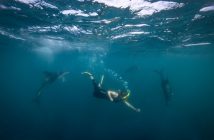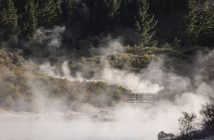With the temptation to go off-grid, Tom Garton heads to the far reaches of Canada’s west coast, to the city voted Best Small City in The World by readers of Condé Nast Traveler readers…
Born and raised in Victoria, BC, realtor Liana Scigliano’s passion is helping newly arriving families put down roots in this city of 500,000 people, nestled on the banks of Vancouver Island. It’s a passion that runs in the family. Her grandfather, a multi-lingual Ukrainian-Italian, also helped immigrants establish new lives in this wild, far western outpost, after settling in Canada after the Second World War. “It can sometimes feel like a Hallmark movie,” she explains.
As I cycle through the Ross Bay Cemetery in early October, with wild deer roaming through the gravestones looking out onto the Salish Sea, the leaves turning burnt tangerine in the early fall, and families dressing the porches of their hundred year old homes with Halloween decorations, I understand what she means.
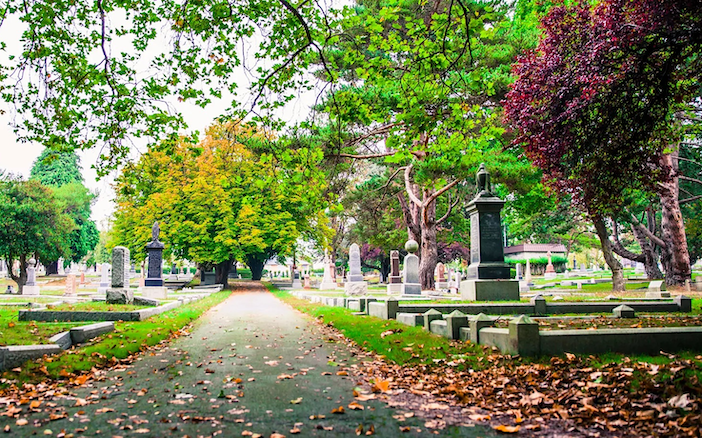
Victoria is regularly listed as one of the happiest, safest, and nicest places to live in the world. Lisa McPhail, a former local news journalist and now the Director of Public Relations at the Fairmont Empress hotel, recounts how the most famous episode in her broadcasting career was ‘The Incident of the BBQ Chip Bandits’.
A couple of intoxicated students from the university had seen a bag of BBQ chips in a woman’s garage as they were walking back from a night of drinking. In an attempt to satiate their drunken hunger, they broke into the woman’s garage and stole the chips. The homeowner called the cops, who responded immediately with two teams of officers and a canine unit. The intoxicated pair were promptly found, taken into custody, and charged with breaking and entering. Excessive, perhaps, but then crime of any sort doesn’t really exist in Victoria.
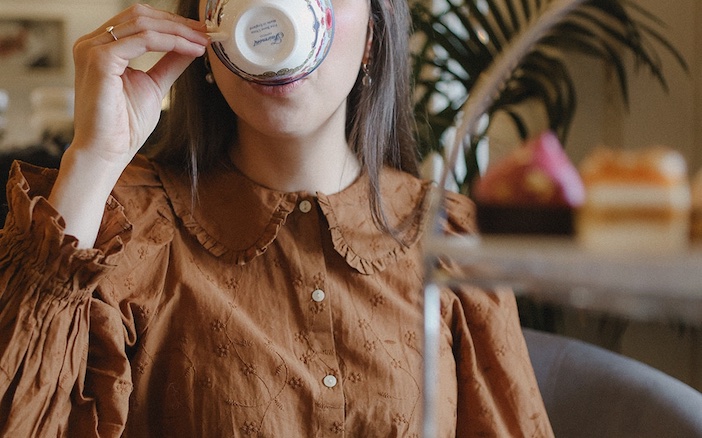
Afternoon Tea at the Fairmont Empress (photo by Sophie Vino, courtesy of Fairmont Empress)
This peaceful, small town atmosphere has led to Victoria being given the slogan ‘a city of newlyweds and nearly-deads’. Day trippers from nearby Seattle, a three-hour catamaran journey on The Clipper, come here for Victoria’s quaint, traditional attractions; an inheritance of the city’s British colonial past. Afternoon high tea at the Fairmont Empress hotel, replete with cucumber sandwiches and scones with jam and clotted cream. The Butchart Gardens – 55 acres of well-kept floral displays – established by a wealthy Scottish ex-pat over 100 years ago. Red double decker buses, originally imported from Transport for London. The copper-domed British Columbia parliament, reminiscent of Belfast City Hall.
Founded as Fort Victoria in the 1840s by the Hudson’s Bay Company during the Oregon boundary dispute, the city was constructed specifically to protect British interests on Vancouver Island. It worked. The Oregon Treaty determined Vancouver Island as British territory, despite being south of the 49th Parallel.
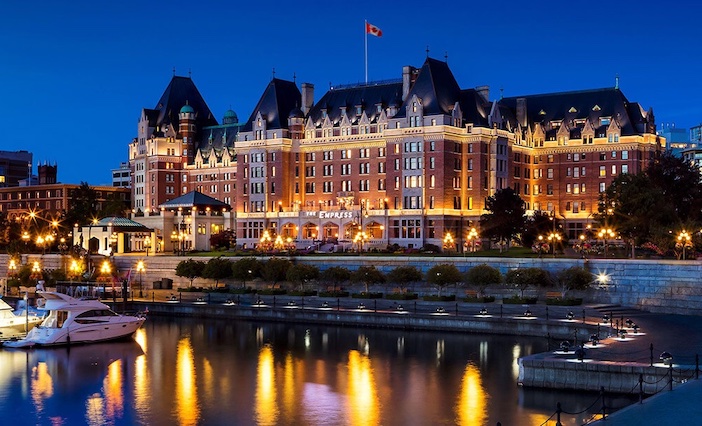
The Fairmont Empress hotel honours these British connections. Victoria’s historic, luxury hotel, is regularly listed as one of the finest hotels in Canada, and in 1981 was designated as a National Historic Site. Founded in 1908, the hotel was originally intended as a terminus for steam ships, and – like the city itself – was named after Queen Victoria. The hotel prides itself on these Royal connections. Its high tea includes references to the Royal Family’s favourite teas; and its palatial Royal suite, with stunning views of the harbour, is dressed with paintings of King George VI and Queen Elizabeth. Rates for the Royal suite begin at 10,000 Canadian dollars a night, roughly £5,000.
As a Brit you can feel that you have landed in a Britain from a parallel universe; albeit one that is clean, pleasant, safe, and comparatively inexpensive. But don’t be fooled by these vestiges of Victoria’s colonial past. We are a long way from home in this far western outpost, and America’s proximity is palpable. If you wander to the city’s waterfront, you can easily trespass into American roaming charges as you gaze upon the misty Washington State’s Olympic Mountains on the horizon.
The city grew after the Californian Gold Rush dried up, and gold was discovered in the Thompson River in British Columbia. In the 1860s, pioneers from San Francisco shipped up the coast in the hope of making their fortune. Victoria was their gateway to the riches of the Canadian wilderness.
The same is true today for travellers in search of other riches; riches of nature, of adventure. From Victoria’s harbour, tours ship tourists up the Salish Sea in search of whales…
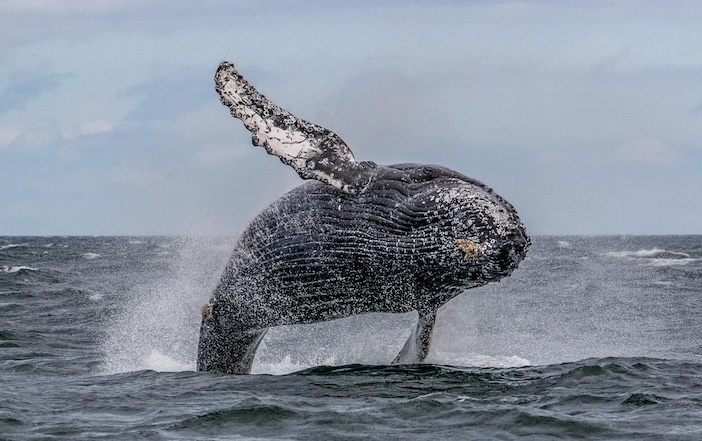
Humpback whale breaching (Photo courtesy of Orca Spirit Adventures)
Early October. The weather is changing. The seas are choppy. The cold is snarling on deck. Our guide, Reed, yells out, “Hold the sides!”
We are heading out into the Pacific Ocean in pursuit of killer whales.
“We call ‘em Killer Whales in English. Orcas in Latin. Sounds fancy in Latin. But if you know your Roman mythology, Orcus was the god of the underworld. Translation: Demons from Hell.”
Demons from Hell. With the ocean horizon stretching out infinitely into the west, the mist covered mountains rising up on either sides of the straits of the Salish sea, covered in gigantic pine trees creating dense, dark green forest, and a storm brewing as you venture further and deeper into the black water, you could perhaps be forgiven for indulging in a sense of the supernatural; for feeling that somehow the membrane between modernity and magic was thinner in this remote part of the world.
“Orca starboard!” Reed cries out.
The wet black dorsal fin surfaces, glistening against the late afternoon sun.
“Chainsaw!”
The orca we have spotted is Chainsaw, a large male, named on account of his jagged fin; the scars of an injury inflicted by a boat decades ago. Today, the boats are only allowed to be 200 metres away from an Orca pod to avoid these types of accidents, but you can still get a good view from that distance.
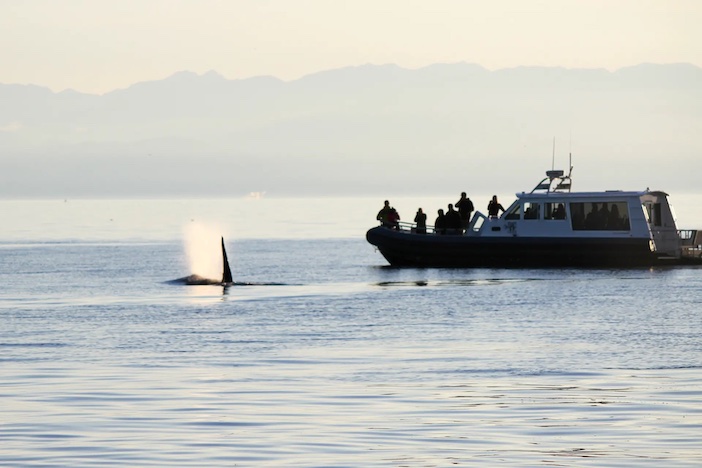
I ask Reed if they ever fully breach out of the water. I’m thinking about Free Willy. They do, she answers, but it seems that only when they’ve got a reason to celebrate something; for example, if they have had a particularly large meal, or if they are copulating. The youngsters also seem to fully breach more often than their older counterparts. To catch a glimpse of a full breach is pure luck. “I get to see it about once a month,” she says.
We change course in search of a group of humpback whales. The humpbacks are huge. Unlike the orcas, who are apex predators, and who will eat anything from seals and birds to squid, and even sharks, humpbacks feed through their baleen plates. The sieve-like contraption filters krill and small fish, which they hoover up through vast quantities of seawater.
Across the afternoon, it feels like we must have seen at least ten humpbacks drifting and diving through the water. You start to pick up a sense of where they will pop up. Gulls gather around shoals of small fish. Water spurts out of the sea like a hot spring. A brief stillness, and then the whale majestically rises up to feed. It’s an image from countless nature documentaries now witnessed in the flesh – and it’s breathtaking.
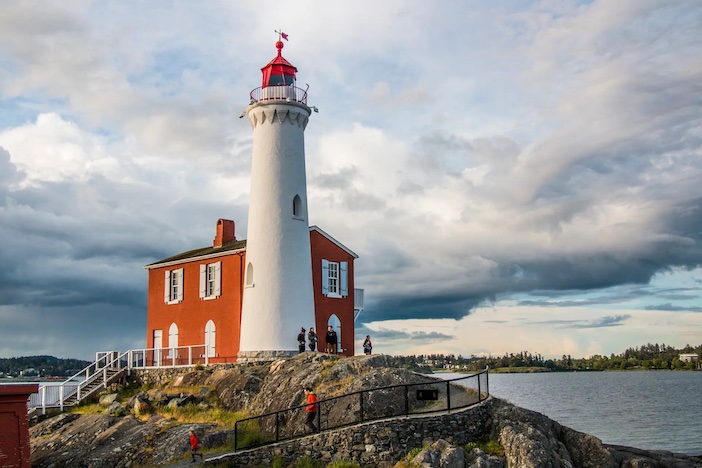
Returning to Victoria, we pass by a small island housing the remote, antique Fisgard lighthouse, overseeing Fort Rod Hill gun battery. A large population of sea lions has decided to take up residence on its shores. As we pass by, you can hear them yelping and snorting like aquatic pigs. They wrestle each other, sparring, in preparation for the mating season, where the female sea lions will choose their contender.
Back on dry land, it does not take long to encounter the same vivid wildlife. In the Goldstream Provincial Park, just a 25-minute drive from downtown Victoria, you can find black bears, cougars, raccoons, minks, beavers, and otters. The salmon run takes place from late October through to December, where thousands of Pacific Salmon migrate upstream to spawn and die. Bald eagles circle en masse in anticipation to scoop them up. Less vicious hummingbirds and woodpeckers can be found in the trees.
For those less willing to go off grid, hike up mountains or trek by streams, a new tree walk has been constructed deep in the forests. A 35-minute drive from Victoria, the Malahat Skywalk guides you through stunning views of the forest canopy, leading to a 32-metre viewing deck, with a majestic view of the fjords and mountains that surround Vancouver Island. A free shuttle bus runs five times a day from downtown Victoria to the Malahat Skywalk during the summer. Well-planned trails guide families through the surrounding landscape.
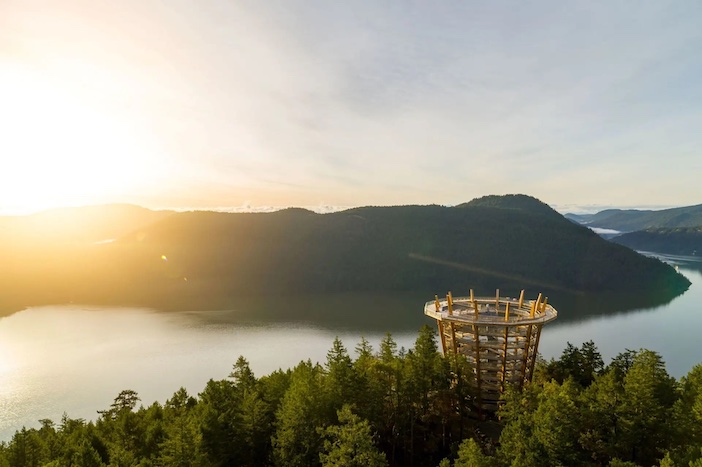
The Skywalk is named after the indigenous community on whose land the tree walk has been built. The Malahat are one of 50 First Nations that have lived on Vancouver Island for thousands of years. Their presence is slowly, gradually being recognized.
A few days before we arrive in Victoria, the state of British Columbia marked the second anniversary of National Day for Truth and Reconciliation, a statutory holiday recognizing the atrocities of the Canadian Indian residential school system. From 1883, Indigenous children were forcibly removed from their homes and educated at residential schools run by Christian churches. The children were given new identities, forbidden from speaking their own language. Many were attacked and abused. Astonishingly, the last residential school only closed down in 1996.
In the Royal British Columbia museum, this truth and reconciliation process is felt acutely. The museum’s exhibitions of the history and artworks of First Nations peoples are currently closed to the public while the museum engages in consultation with Indigenous communities. The museum is also involved in the restitution of artworks that were stolen or taken from First Nations people. Recently, the museum returned a totem pole to another indigenous community in British Columbia. The ceremony was presided over by representatives from the Lekwungen people on whose ancestral lands the museum is located.
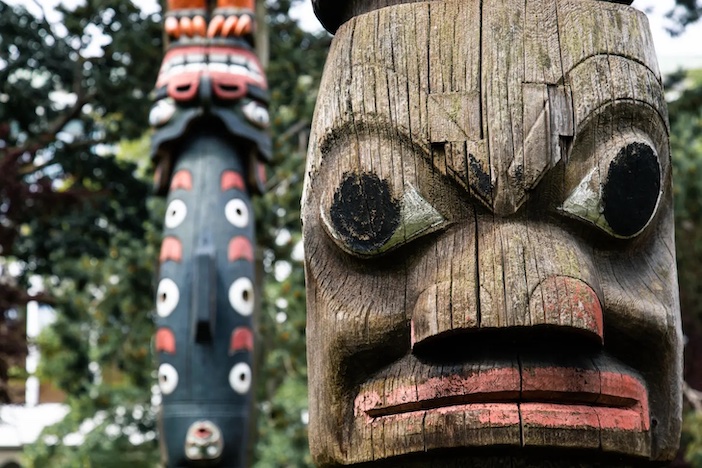
The Lekwungen people have lived on the southern tip of Vancouver Island for thousands of years. In the 1840s, with the arrival of the British, the Lekwungen village, which had been on the site of present-day Victoria, was relocated.
In Victoria’s harbour, we meet Chief Ed, a leader of the Lekwungen People. The harbour authority has been engaging with Chief Ed and others to commission indigenous artists to create decorative artworks that celebrate indigenous culture. Iron wrought representations of orcas, wolves and whales now adorn the harbour’s gates.
Chief Ed explains how killer whales and wolves are integral to the belief system of the Lekwungen people. Their creation story chronicles that a pod of orcas swam so vigorously that they created a whirlpool. The orcas kept swimming to escape the whirlpool, and transformed into a pack of wolves that roamed the land. The pack of wolves then transformed into the Lekwungen people.
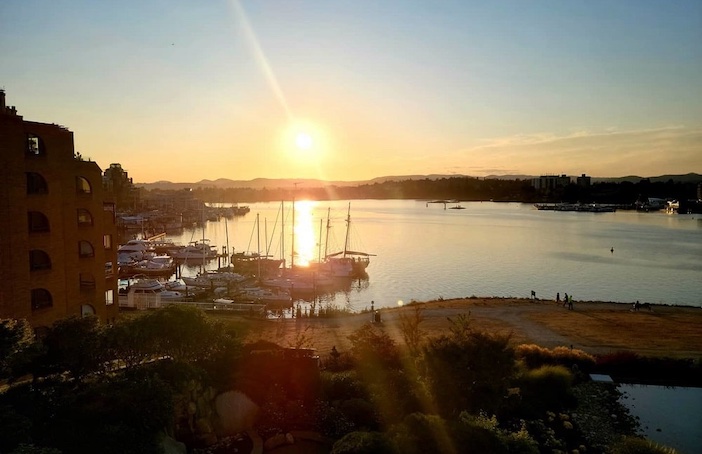
Harbour view at sunset (photo courtesy of Inn at Laurel Point)
I wander back through Victoria’s harbour to my hotel, the modern Inn at Laurel Point, with expansive views across the sea. A lone, ageing bagpiper skirls Scotland the Brave while a seaplane drifts into view, settling on the calm, green-black water, shimmering in the late afternoon sun. These seaplanes make regular journeys back and forth directly to Vancouver city, as well as regular seasonal flights to Tofino and Salt Springs Island during summer months; but can also be chartered to make more intrepid journeys up the coast of the island.
As the propellers judder to a halt, I’m left thinking about the Lekwungen creation story. As the Lekwungen people emphasise in their myth, this place is a wild world of wolves and killer whales; where bald eagles circle, and black bears prowl. Venture further north up Vancouver island, and you will soon find yourself with no phone signal. The city could be the setting of a Hallmark movie, but beyond the neatly trimmed hedgerows and white picket fences, the clean streets and polite conversation, there is an epic wilderness calling you to explore.
For more information about the Fairmont Empress, please visit www.fairmont.com. Rooms start from $399 / £222 for a standard room, with Fairmont Gold rooms from $500 / £278 per night.
Rooms at the Inn at Laurel Point start from $279. For more information, please visit www.laurelpoint.com. WestJet offers flights to Victoria, British Columbia, from London Heathrow. Return economy fares start from £555 per person. *Prices correct at the time of issue, subject to change and availability. For more information about Victoria, and to start planning your trip, please visit www.tourismvictoria.com.
Photos courtesy of Destination Greater Victoria unless otherwise credited


